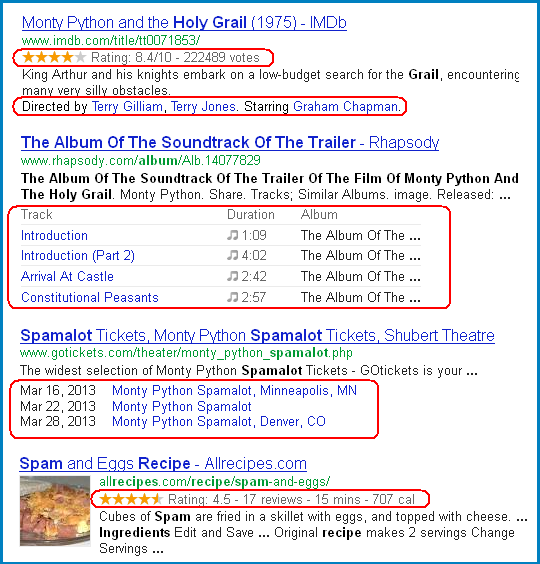As an industry founded in technology, it should come as no surprise that SEO best practices remain in a constant state of change. In fact, many SEO ‘best practices’ from only a few years ago would be regarded as marketing suicide for any website today (keyword stuffing, link buying, etc.) In the past decade SEO has been proclaimed to be dead over a million times, yet it continues to survive and thrive despite a countless number of algorithm updates. It’s safe to assume that SEO isn’t going anywhere anytime soon, but the nature of the beast is evolving. What can we expect from the SEO world for 2016-2017? Continue reading as we divulge our predictions for what’s to come from SEO in the next year.
Overall Trend: Mobile Optimization Is Key
2015 has been a big year for mobile. Back in April Google announced the release of the Mobilegeddon update which penalized sites for failing to be responsively designed. In May the search giant proclaimed that mobile had officially surpassed desktop in search volume. Mobile search optimization is now more important than ever and it has brought about the three of the four trends we’ve predicted below.
1) Local SEO

Local SEO has always been important, but for 2016-2017 it will be more important than ever. As competition for organic results continue to grow, winning over local search queries offers the best shot companies have at getting their web properties in front of the right audience. Local search has clear synergy with mobile search and voice search. Google’s recent pigeon update has more than demonstrated their commitment to this aspect. The best way to optimize for this trend is to make sure your Google Map information is current, create listings on local directories and review sites with consistent NAP information, and write content optimized for local keywords. Furthermore, you may want to integrate your business information into mobile apps. Google now scrapes data from mobile applications and displays that information in search.
2) Voice Search
Tying in with the increasing prominence of mobile search is the growing importance of voice search. A study conducted by Northstar Research found that 55% of teens use voice search on a daily basis and 56% of adults enjoy using voice search, because it makes them feel more tech-savvy. The truth of the matter is that voice search will only continue to grow in 2016-2017 in light of the fact that speaking is far easier than typing. Mobile users are more apt to ask Siri, Cortana, or Google Now their query rather than typing it out, especially while double tasking or on the move. How do you optimize your web properties for voice search? Think about the primary difference between a voice search and a typed search. For example, let’s say a user is searching for a donut shop in Rochester, MI. On a desktop that user would more than likely type a query along the lines of ‘donut shop Rochester’. However, using voice search the query would more than likely be something along the lines of ‘Where is the nearest donut shop?’ As your natural intuition may have already told you, voice searches are characterized by the use of question words: who, what, where, why, and how. Therefore, to optimize your web properties for mobile search you’ll want to reformat some of your headlines into questions that include question words.
3) Structured Data & Direct Answers

What are direct answers and structured data? Do you ever wonder why certain sites get yellow stars, prices, or thumbnails under their search listing? The answer is structured data. The term may sound off-putting, but it’s simply a method of tagging the data in your web pages with schema markup so that search engines can better understand them. Schema.org provides a lot of great resources for you to get started with implementing schema markup. Additionally, you can use Google’s structured data testing tool to test whether your schema implementation was successful.

Direct answers are answer boxes that appear as the first result in certain search queries. In the case above, the definition of pie doesn’t get a source link. However, links to the source are provided roughly 75% of the time, which is good for your site if your content becomes a direct answer. To have your content featured in an answer box you’ll want to work to become an authoritative source for the answer to a question while including appropriate structured data markup. Search Engine Land has an excellent post with more info on how to optimize for Google’s direct answer box. Structured data and direct answers have become far more prevalent in Google search results. In fact, Google now provides rich snippets or direct answers for approximately 19% of all search queries. This percentage is expected to grow over the course of 2016 with some serious implications for search. The bottom line is that you’ll want to start included structured data on your sites. You may not be comfortable with Google using your information without referring visitors, but it’s certainly better than being left out of the loop entirely!
4) Digital Marketing Synergy
Those in the industry know that the very way SEO is described has changed. SEO has now become almost synonymous with content marketing. As search engines place more emphasis on social media indicators and high quality content SEO no longer stands on its own anymore. Some agencies hire content marketers and social media managers to produce content to be handed off to SEO experts for optimization. Instead, content should be created with SEO in mind from the very beginning. We predict that it will become increasingly important for content and social media marketers to have an understanding of search without reliance on SEO experts.
Did We Miss Anything?
Are there any anticipated SEO trends you believe we missed? Leave a comment below. We’d love to hear your opinion!





